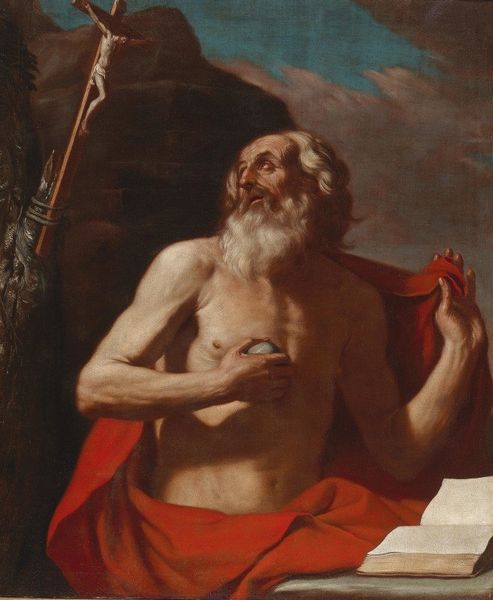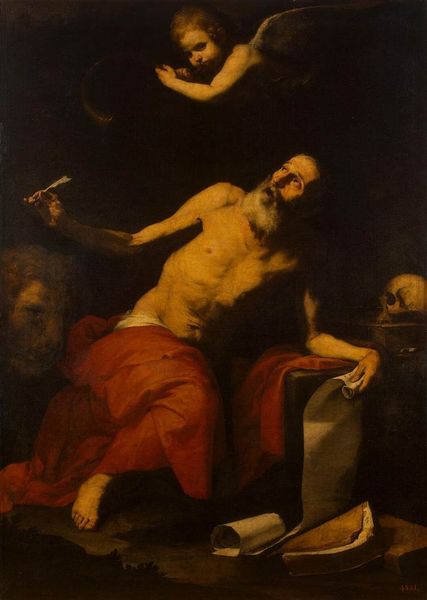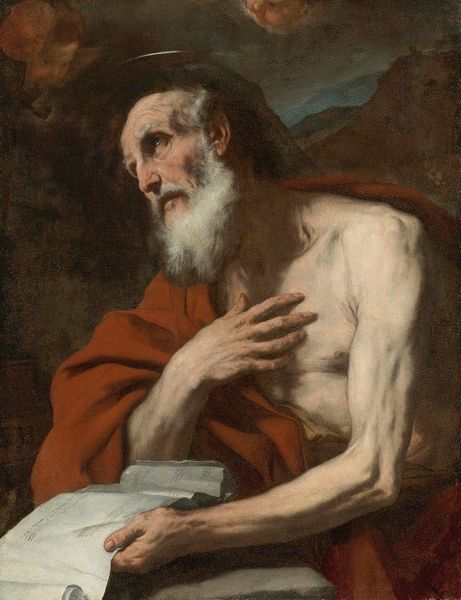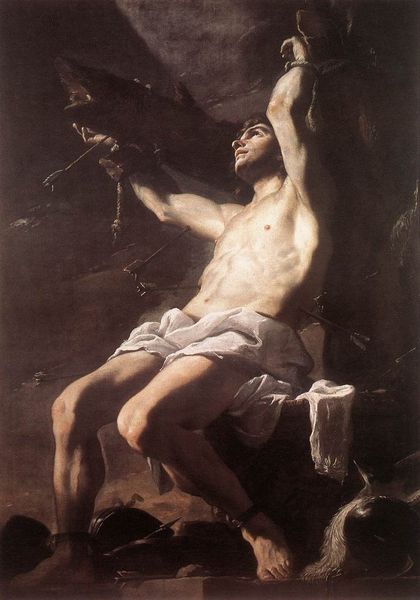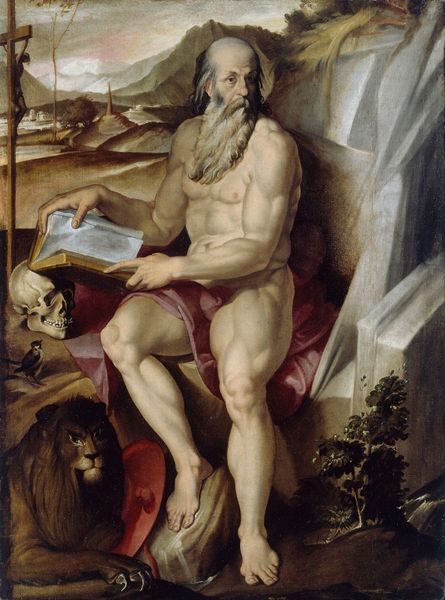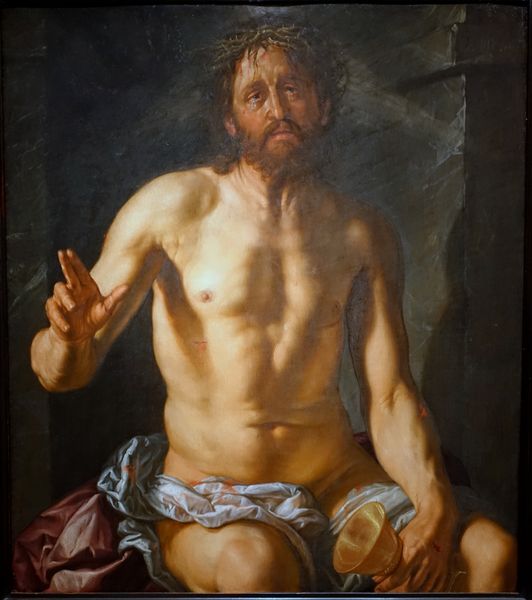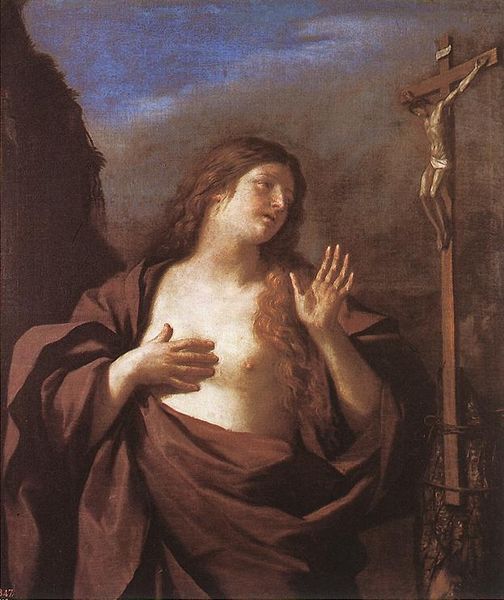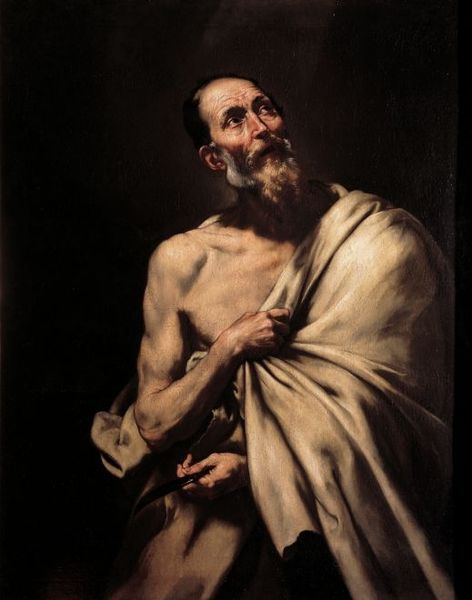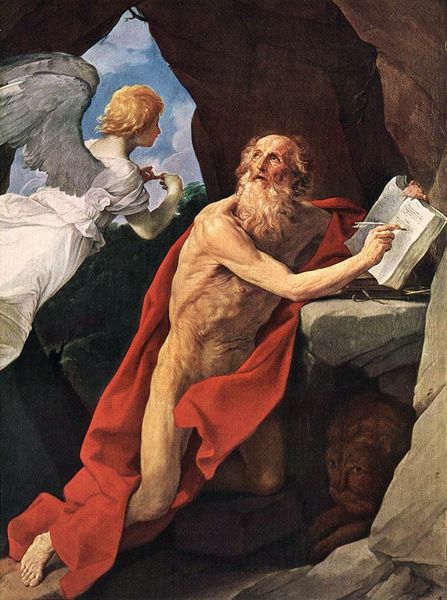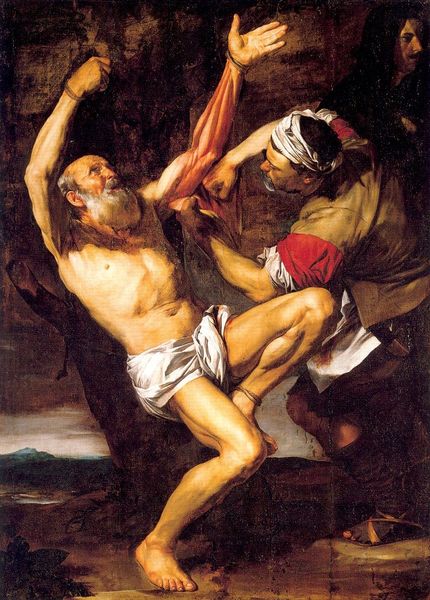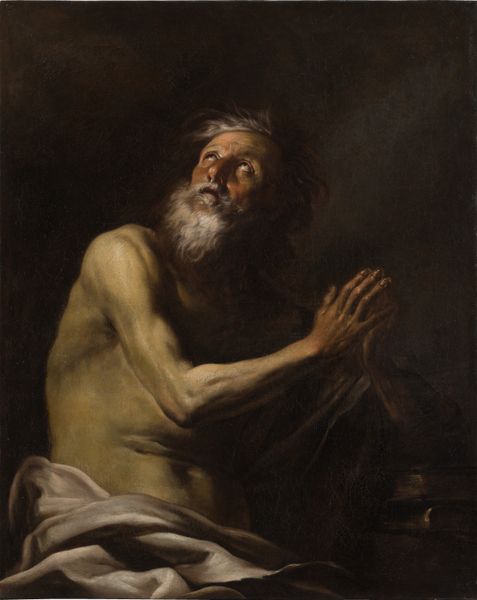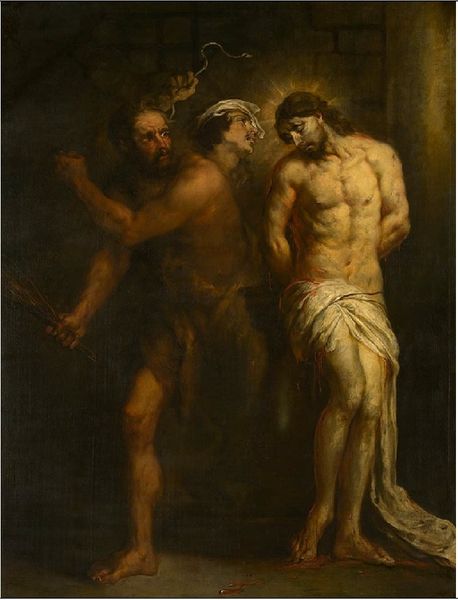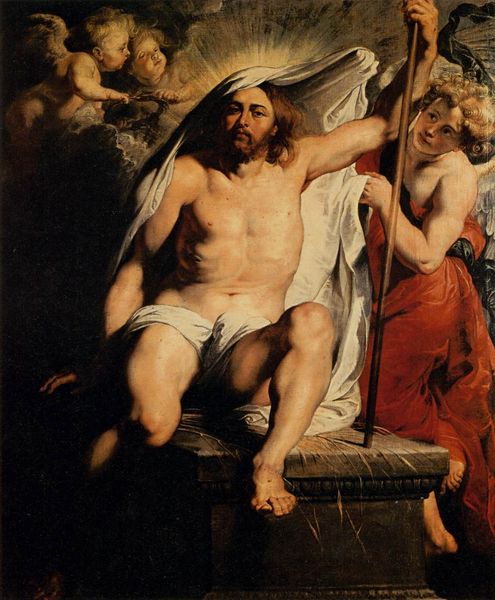
oil-paint
#
portrait
#
baroque
#
oil-paint
#
charcoal drawing
#
figuration
#
human
#
history-painting
#
academic-art
#
charcoal
Dimensions: 217 x 164.5 cm
Copyright: Public domain
Curator: The emotional tenor here is immediately arresting. It feels simultaneously ecstatic and isolating. Editor: We’re looking at Guercino’s “St. Jerome in the Wilderness,” an oil painting executed around 1650. It currently resides in the Hermitage Museum in Saint Petersburg. What compositional elements strike you? Curator: The dynamism of the figure is masterfully achieved. Look at the acute diagonal created by his outstretched arm—the very picture of inspiration channeled into active creation! The shadowed areas seem to frame and intensify the illuminated flesh of Jerome. Editor: Jerome’s placement within a rocky, austere setting echoes his penance in the Syrian desert. Consider the open book. Its presence symbolizes not just learning but Jerome's monumental translation of the Bible into Latin, a cornerstone of Western Christian scholarship. The trumpet of the divine sounds above; does this signify the revelation, or some call to final judgement? Curator: I would focus, rather, on the surface of the work itself. Guercino's characteristic impasto layers visibly accentuate the texture, building up both the forms of Jerome’s figure and the stone architecture beneath. Notice, also, the expressive use of light and shadow. They provide depth and enhance the tactile quality of the forms represented. Editor: Symbolically, his semi-nudity represents humility and detachment from worldly goods, themes often explored in depictions of ascetics and saints. Even the pen, held aloft, transcends its function as a writing instrument, becoming a scepter of spiritual authority, bridging Heaven and Earth. Curator: But how successfully does this articulation function purely on a visual plane? Does the chromatic range feel consistent? How well is the depicted narrative integrated formally into the image as a whole? Editor: These works grant us unique insight into the past's vision of spiritual questioning. Ultimately, each art experience encourages a personal engagement that goes beyond art history. Curator: Indeed, by applying these different critical lenses, we achieve a more thorough and rewarding engagement with Guercino’s work, deepening our understanding of the pictorial as both constructed object and a potent source of meaning.
Comments
No comments
Be the first to comment and join the conversation on the ultimate creative platform.
